This Apartment Is Inside the Oldest Lighthouse in New York State
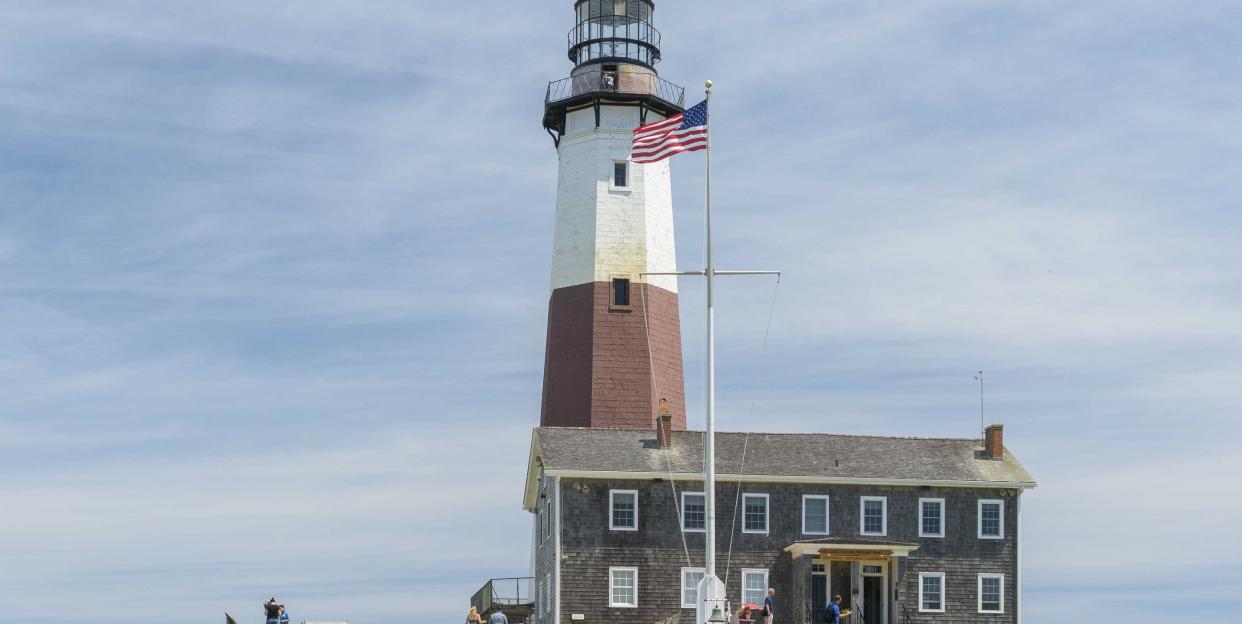
In retrofitting modern homes, Jason Biondo, the Montauk-based founder of Hammerhead Construction, has crossed the Mason-Dixon line to retrieve reclaimed lumber that dates back to the 1800s. These antique beams (often used as mantels) can sell for $20 to $50 per foot. And yet, on a project at the easternmost point of Long Island, Biondo found it for free.
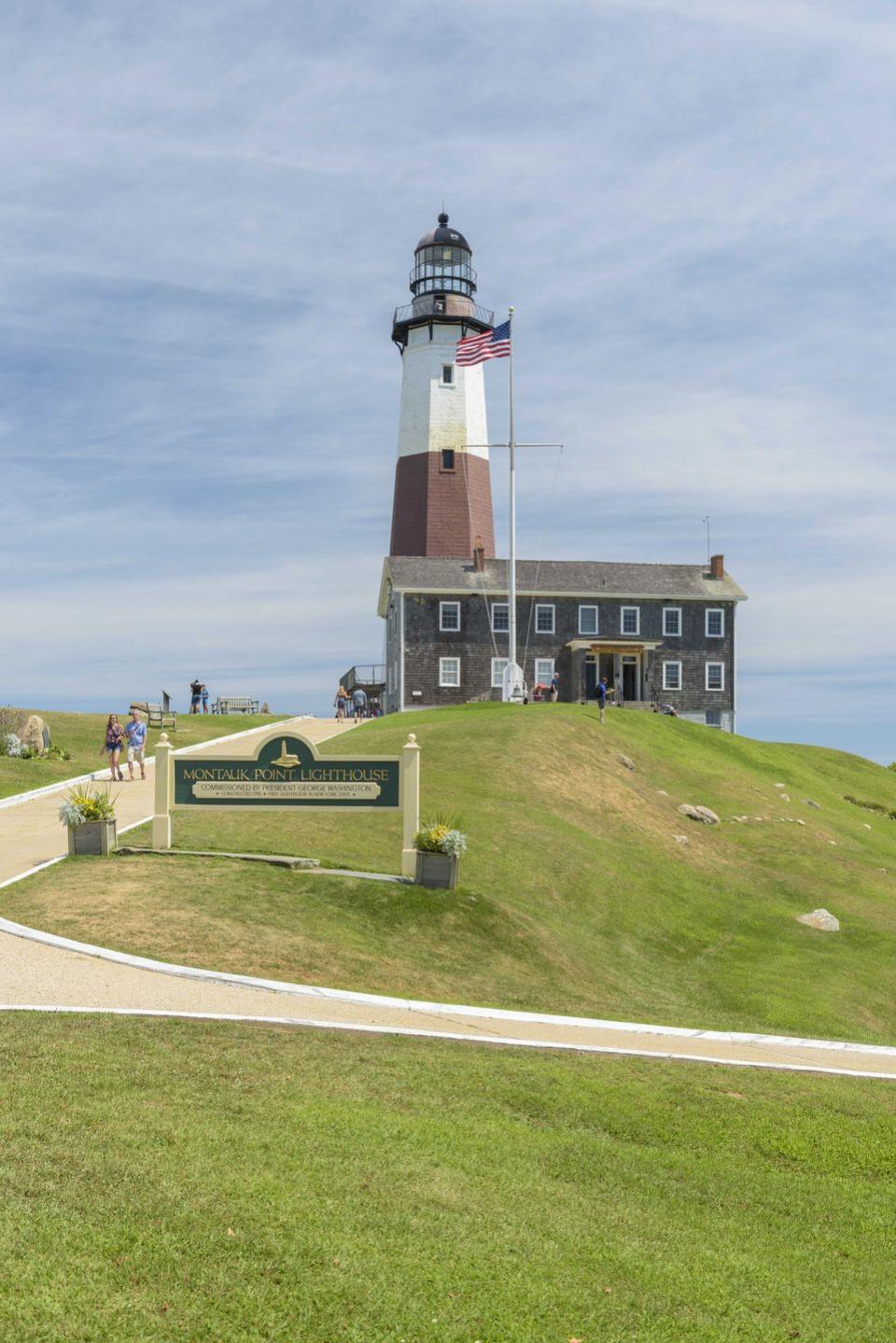
The apartment is home to the keeper of the Montauk Lighthouse, an iconic structure that attained status as a National Historic Landmark in 2012. Authorized by the Second Congress, under President George Washington, the 1796 construction was the first lighthouse in New York State. The keeper’s quarters are on the second floor of a building attached to the lighthouse itself, above the museum and gift shop.
On my first and only visit to the keeper’s quarters, in 2018, I was on assignment as a freelance journalist for The New York Times. Then, the resident was Marge Winski, who had been living there three decades with a series of Newfoundland dogs that weighed more than I did. The occasion for my visit was her decision to move to Maine, where she would live, aptly, in a house with a view of a lighthouse.
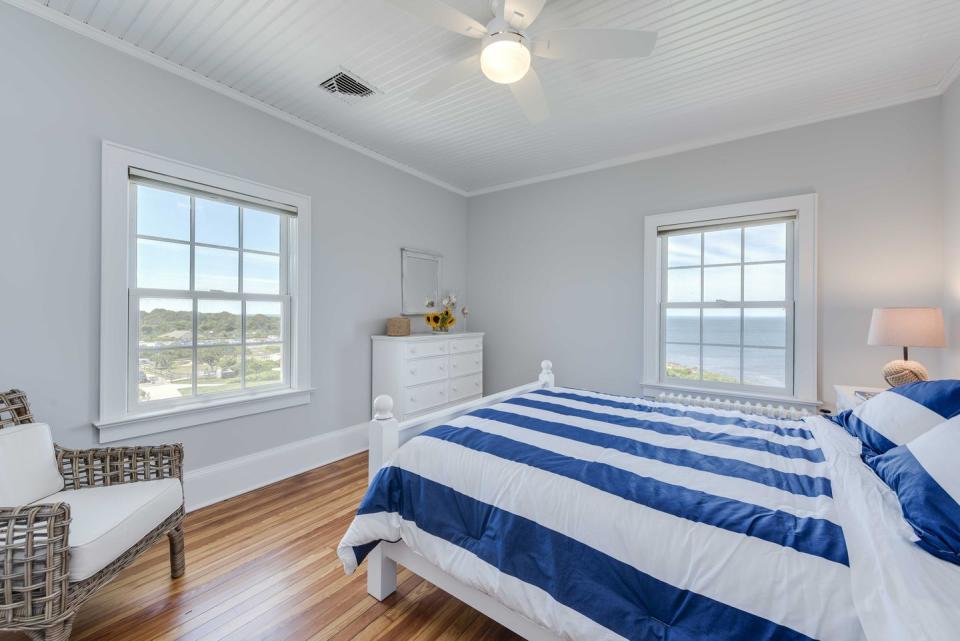
Marge’s successor is the banker and longtime lighthouse board member Joseph Gaviola. His role as keeper, like Marge’s, diverges from the traditional lighthouse keeper role. Rather than tending to a light and fog horn, which have been automated by the U.S. Coast Guard since the mid-1980s, Gaviola is a presence on the property.
The extremes happen at the Montauk Lighthouse, as Joe puts it. Two hours east of the hamlet where Joe and I each grew up, a generation or two apart, the weather is more severe. Winds whip, not whistle. These days, the sound of pounding precipitation is accompanied by the sound of construction. There are two ongoing exterior projects: a revetment that involves the removal and replacement of five- and ten-ton armor stones to protect the lighthouse from shoreline erosion, and a second that will give the lighthouse tower a phased facelift.
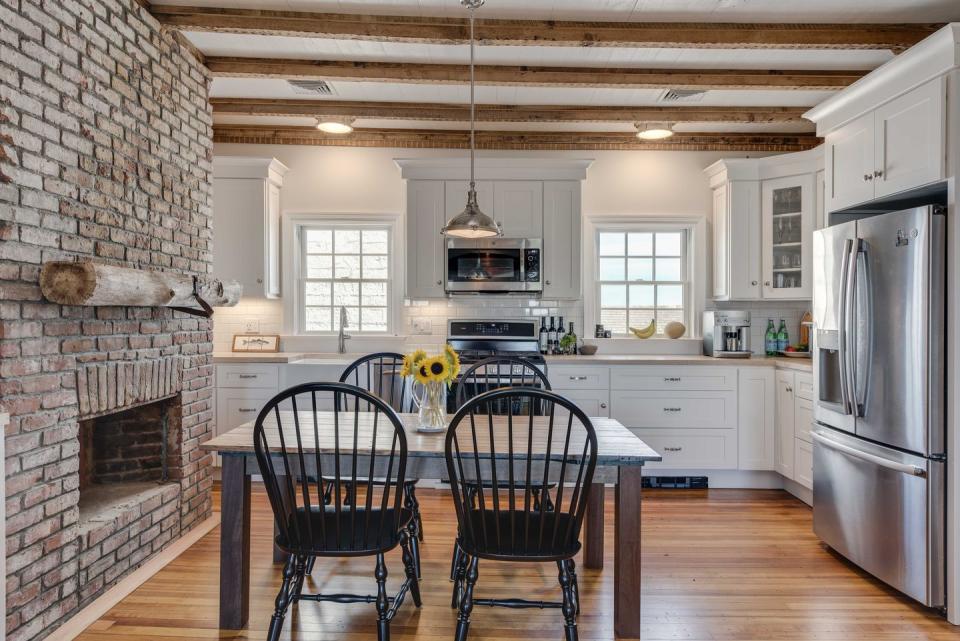
Interior work on the keeper’s quarters was completed before Gaviola had fully moved in a few years ago. When we spoke then, his main objective was to make more closet space for his suits. Locals doubted his suitability for such a rugged, isolating living situation disguised as simply picturesque. He lives there still and happily, with a storied ghost named Abigail.
“There was definitely an insular element to it here,” he says, of living there during the pandemic. “Doubly so, to be on my own.”
Gaviola, whose day job is in finance, has lived there alone throughout the pandemic; but he has had visitors. The landmark’s adjacent park saw 1,421,690 visitors in 2020 according to New York State Office of Parks, Recreation and Historic Preservation data.
Meanwhile, the landmark living space has also become Joe’s pandemic-era home office. A desk Biondo built into the wall is made of old beams found in storage. Walls are white and beams are brown, creating a clean canvas for abundant natural light in an authentically nautical atmosphere. There are no words for the view.
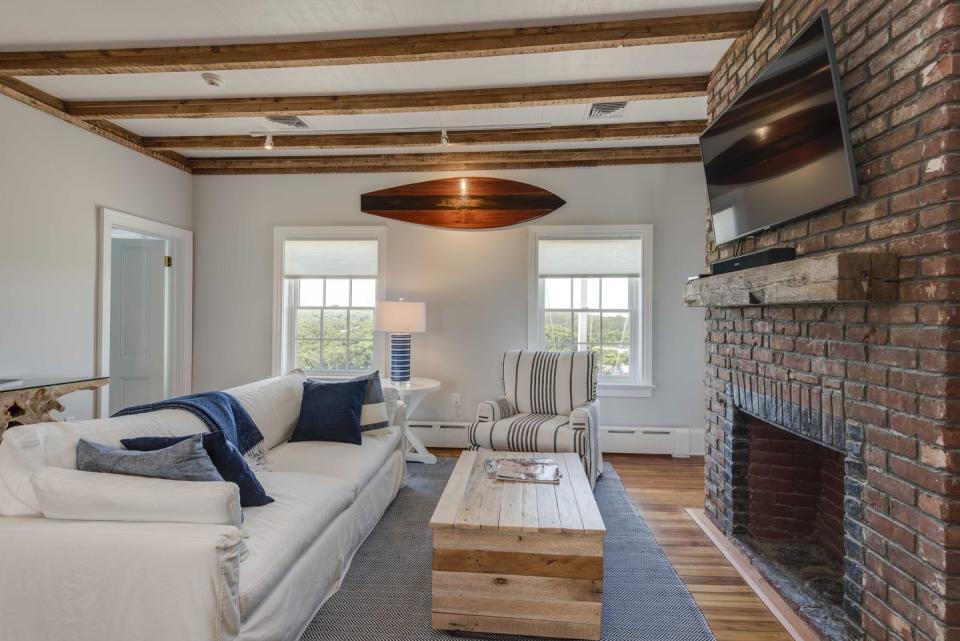
“Through technology and encryption we were all enabled to do anything basically from home," says Gaviola. “We had a few work from home contests on the best home offices and I wouldn’t even put mine in.”
During initial construction, Gaviola found himself sleeping on a basement air mattress, his banking suits hanging from a copper ceiling pipe. Biondo describes the process, which seems equal parts restoration and renovation, as an “unbuilding.”
“I’m a second-generation builder, and I don’t know what happened in the 70s and 80s but they just, it was chic to just cover all beautiful things up,” Biondo says. “A big part of being a builder now is just tearing away those layers from the 70s and 80s, and just exposing what’s underneath there.”
Exercising the caution of an archaeologist on a dig, Biondo and his team used small pry bars and light hammers to uncover design details long concealed. Beneath three layers of linoleum were narrow planks of Douglas fir speckled with black burn marks from a wood-burning stove. Behind paneling and plaster stood 1860 brick.
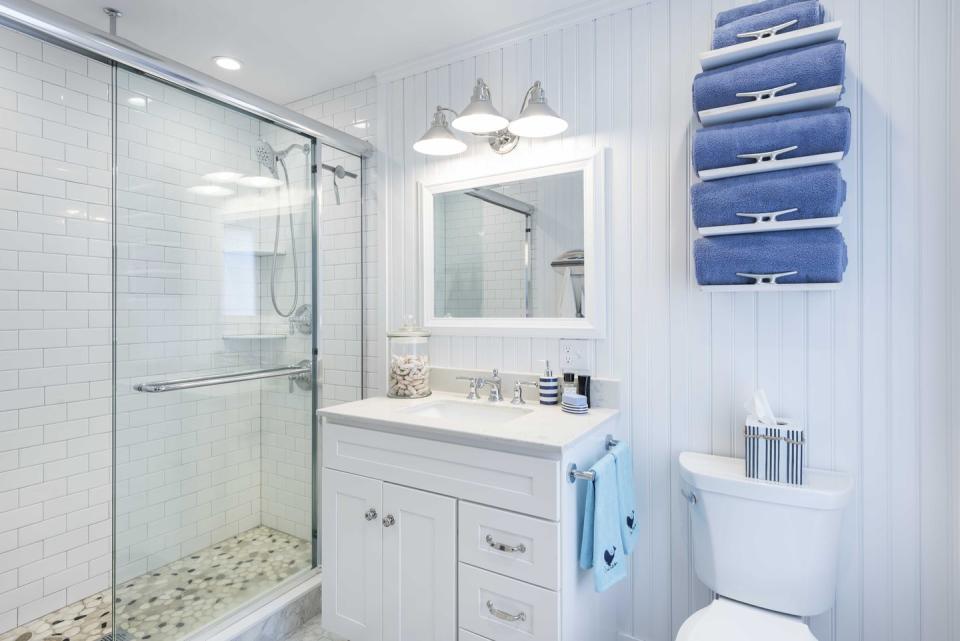
Unlike a typical 1980s beach house renovation, he went in with a wire brush instead of a sledge hammer. He knew not what was behind layers of sheetrock until he saw it. Findings included a second brick fireplace and chimney that had been covered up.
“If you stared at those beams in 1985, you’d be like, ‘Wow, that’s old, let’s put up formica,’” he says. “Now, because of HGTV and people recognizing that it’s absolutely beautiful, we know that you have some hidden treasures in those kinds of instances.”
Want more beautiful homes? We’ve got plenty. Let’s swoon over them together.
Once unearthed, there was little to do to the walls and floors; they had been “entombed,” wholly preserved, he explains. Exposed beams appear to be hemlock and oak, each of which Biondo says were plentiful in the area at the time the lighthouse was built. The floors are Douglas Fir and old growth, exhibiting grain patterns that no longer exist, Biondo says. Gaviola likens the grain to a zebra print.
“Nowadays, when you buy Douglas Fir, all that lumber is milled from tree farms, so the trees aren’t even really mature,” Biondo says. “You’re looking at this wood where, the wood itself is centuries old, who knows how old the tree was that they got it from.”
Modern appliances mixed with authentic pieces of history characterize a living space that reads like a museum. The kitchen table top is a door Gaviola and Biondo found while rummaging through an attic. Decor items include historic artifacts like the oars and tiller from a dory used in shipwreck rescues and various lanterns on loan from the Coast Guard.
“From a design standpoint,” Biondo says, “When you have old material, reclaimed material, antique lumber, antique brick, and then you juxtapose it to a brand new kitchen, that’s a home run.”
Follow House Beautiful on Instagram.
You Might Also Like

